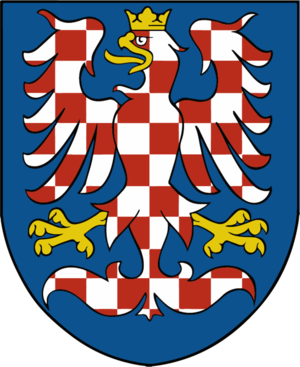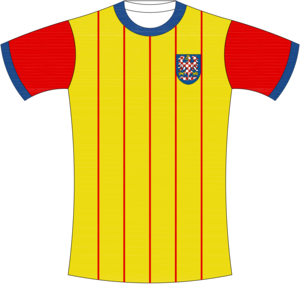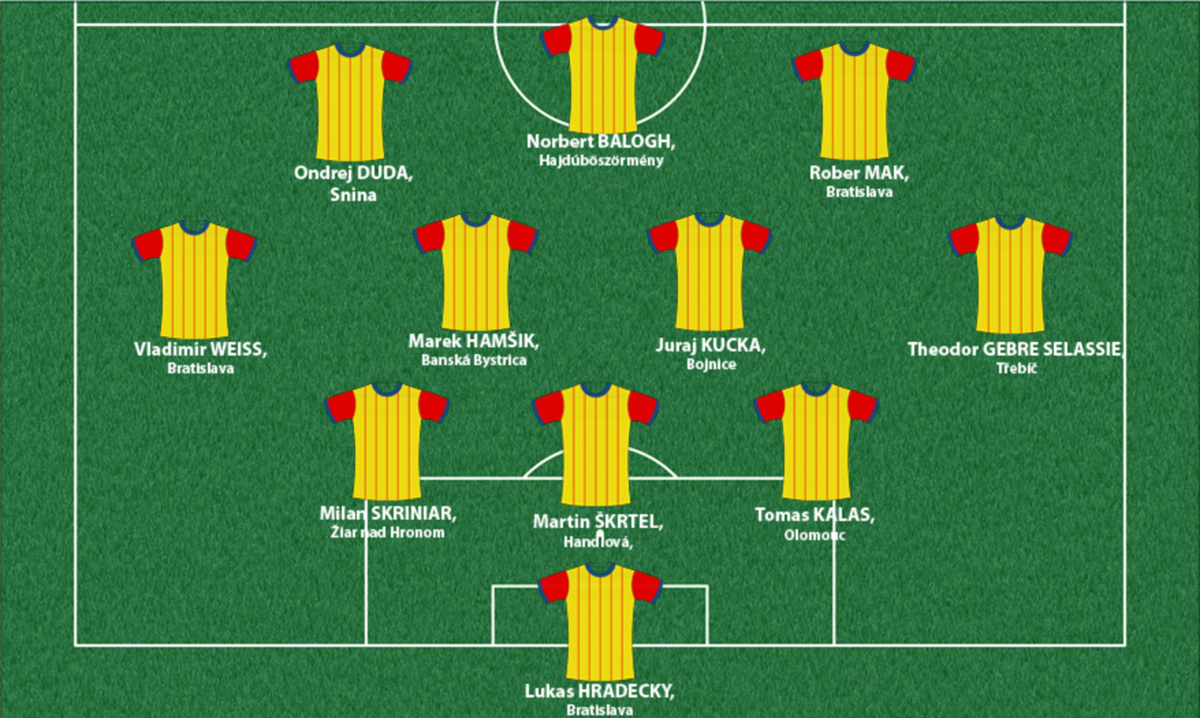The Principiality of Great Moravia
Great Moravia or simply Moravia was a Slavic state whose princes (sometimes also referred to as dukes) spread their power from the original center in the valley of the river Morava, to a great part of Central Europe.

Coat of arms

Shirt
| Position | First name | Last name | Mjesto rođenja | Like | Dislike | |
|---|---|---|---|---|---|---|
| GK | Lukas | HRADECKY | Bratislava |
15 |
6 |
|
| GK | Martin | DUBRAVKA | Žilina |
5 |
2 |
|
| GK | Tomas | VACLIK | Ostrava |
0 |
2 |
|
| DC | Martin | ŠKRTEL | Handlová |
32 |
10 |
|
| DC | Milan | ŠKRINIAR | Žiar nad Hronom |
41 |
6 |
|
| DC | Nortbert | GYOMBER | Revuca |
2 |
1 |
|
| DC | Tomas | SIVOK | Pelhřimov |
1 |
1 |
|
| DLC | Michal | KADLEC | Vyškov |
1 |
2 |
|
| DRLC | Tomas | KALAŠ | Olomouc |
5 |
1 |
|
| DRLC | Tomas | HUBOCAN | Žilina |
4 |
3 |
|
| DRL | Theodor | GEBRE SELASSIE | Třebíč |
7 |
1 |
|
| DR | Ondrej | CELUSTKA | Zlin |
1 |
1 |
|
| DR | Petr | PEKARIK | Žilina |
0 |
2 |
|
| DLC/ML | Filip | NOVAK | Přerov |
1 |
2 |
|
| DMC | Patrik | HROŠOVSKY | Prievidza |
0 |
1 |
|
| MC | Akos | ELEK | Ózd |
1 |
1 |
|
| MC | Juraj | KUCKA | Bojnice |
10 |
4 |
|
| MC | Stanislav | LOBOTKA | Trenčín |
10 |
6 |
|
| MC | Tomas | HORAVA | Brno |
2 |
1 |
|
| MRC | Matus | BERO | Ilava |
2 |
4 |
|
| AMC | Laszlo | BENEŠ | Dunajská Streda |
6 |
3 |
|
| AMC/SS | Marek | HAMŠIK | Banská Bystrica |
39 |
5 |
|
| AMC/SS | Ondrej | DUDA | Snina |
6 |
1 |
|
| AMRLC | Tomas | PRIKRYL | Olmütz |
0 |
1 |
|
| AMRL | Laszlo | KLEINHEISLER | Kazincbarcika |
2 |
1 |
|
| AMRL | Miroslav | STOCH | Nitra |
3 |
2 |
|
| AMRL | Robert | MAK | Bratislava |
6 |
2 |
|
| AMRL | Vladimir | WEISS | Bratislava |
8 |
2 |
|
| FRLC | Josef | ŠURAL | Hustopeče |
2 |
0 |
|
| FC | Adam | NEMEC | Banská Bystrica |
6 |
3 |
|
| FC | Michal | DURIS | Uherské Hradiště |
0 |
2 |
|
| FC | Milan | BAROŠ | Valašské Meziříčí |
2 |
1 |
|
| FC | Norbert | BALOGH | Hajdúböszörmény |
2 |
2 |
(Today part of: Slovakia, eastern Czech Republic, northeastern Hungary)
After the division of the Frankish state in Verdun (843), the Principality of Great Moravia rose along its eastern borders. This development inevitably threatened the interests of the king of East Francia, so the two soon found themselves at war. The conflict became even more serious when the Moravian prince invited missionaries of the Eastern Church into his land around 860 AD, the brothers Methodius and Constantine (later known as Cyril) from Thessalonica, by which he attempted to weaken the influence of the Frankish state, which established its influence through the work of “Latin” priests. It is assumed that the brothers had created the Church Slavonic language and its Glagolitic alphabet for the very purpose of this mission. Nevertheless, their followers will be persecuted, and the Glagolitic alphabet of the Moravian-Pannonian area will spread south, while the prince of Moravia will commit himself to paying tribute to the Franks, and swearing them an oath of fealty.
The state’s power had, in most part, been maintained by the strong personality of its prince Svatopluk (ruled 862 – 894), and it belonged to an early type of state, whose foremost characteristic was the institute of pillaging. Despite its huge territory, it was structured on the principle of tribal interdependence, and concentrated around a small, strong core, which was destroyed in the Hungarian incursions at the end of the 9th century. From its western remnants,rose the Principality (sometimes referred to as Duchy) of Bohemia, where the Premyslid prince Borivoj attained highest authority, even during the reign of the Moravian prince, and who made his seat in Prague.
Sources
- Petr ČORNEJ, Ivana ČORNEJOVA, Ivan RADA, Vratislav VRANIČEK,''Povijest Češke : od seobe Slavena do suvremenog doba'', Zagreb, 2014.
- Mile BOGOVIĆ, ''Glagoljica kao historiografski problem'', Hrvatska historiografija XX.st: između znanstvenih paradigmi iideoloških zahtjeva, (ur. Srećko Lipovčan i Ljiljana Dobrovšak), Zagreb, 2005.
- ''Ćiril i Metod, sv.'', ( http://www.enciklopedija.hr//natuknica.aspx?ID=13585)
